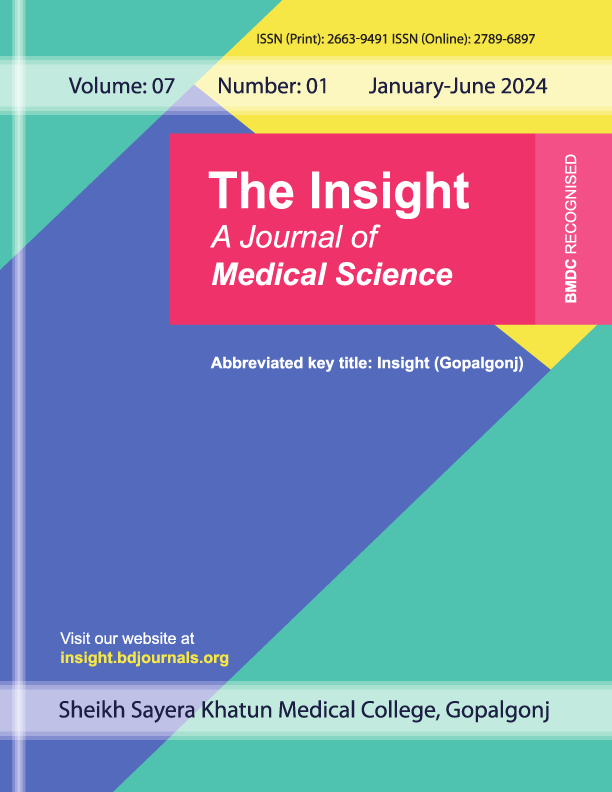Published 15-11-2024
Keywords
- Laryngeal Cancer,
- Partial laryngectomy,
- Endoscopic surgery,
- Quality of Life
Copyright (c) 2024 The Insight

This work is licensed under a Creative Commons Attribution 4.0 International License.
How to Cite
Abstract
Introduction: Laryngeal cancer, one of the most common malignancies of the head and neck region, often presents at an early stage, allowing for multiple treatment options that aim to preserve function while achieving effective tumor control. So, this study aimed to evaluate the outcome of surgery in the treatment of early laryngeal cancer. Methods & Materials: This retrospective study evaluated surgical outcomes in 100 patients with early-stage (I and II) laryngeal cancer treated from January 2023 to January 2024. Data were analyzed using SPSS version 26. Results: This study on early-stage laryngeal cancer involved 100 patients, primarily aged 40–49 years, with a male predominance (60%). Most tumors were glottic (55%) and T1 stage (70%). Partial laryngectomy was the most common surgery (45%), with a significant proportion of patients (50%) experiencing no postoperative complications. Recurrence rates varied by surgery type, highest in endoscopic surgery (35%) compared to partial and total laryngectomies. Survival decreased over time, with 80% surviving the first 12 months, and overall disease-free survival was 85%. Quality of life scores were high or moderate for most, and only 15% of patients showed positive lymph node involvement. Conclusion: Surgical treatment for early-stage laryngeal cancer demonstrated high survival rates and effective tumor control, particularly in cases managed with partial laryngectomy. Recurrence rates varied across surgical types, with endoscopic surgery showing a higher risk, highlighting the need for careful patient selection. Quality of life was generally well-preserved, though some patients reported minor impairments in physical and emotional functioning.



